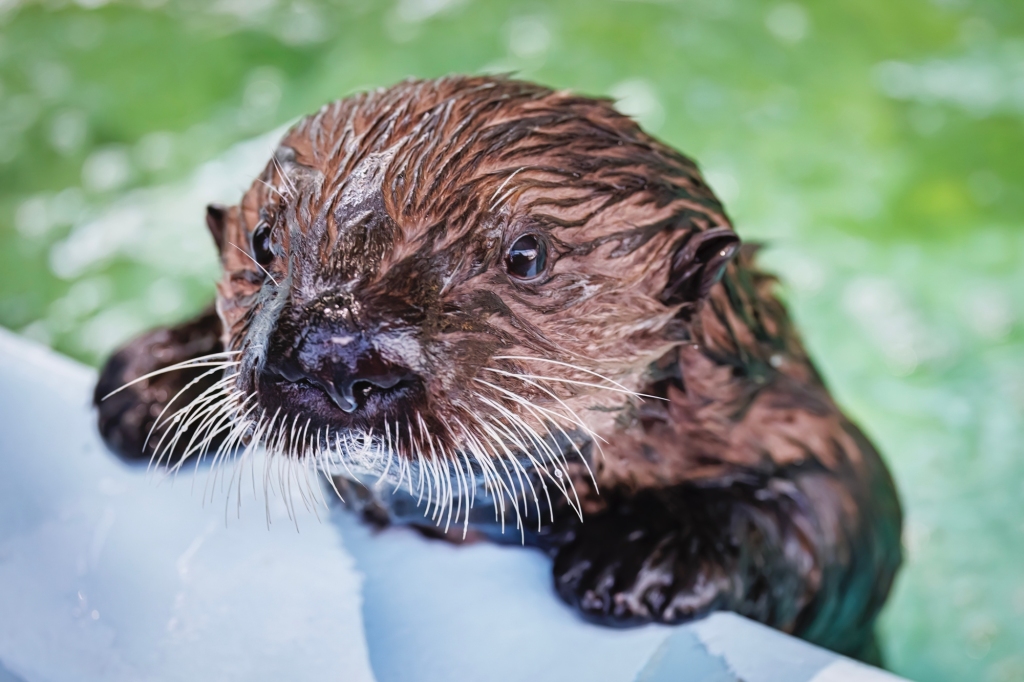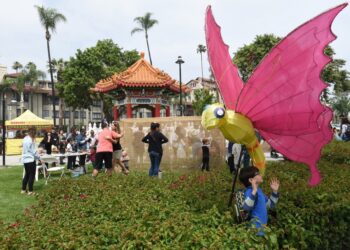Long Beach’s Aquarium of the Pacific has three new residents — Elle, Bee and Cee, a romp of sea otter pumps named as an homage to their new home.
All three pups were found stranded on various beaches in California. Elle, for example, was found at Marina State Beach in June last year at just ten days old, Bee was rescued from Morro Strand Campground at three-weeks-old in January, and Cee was located at Carmel Beach in January at just five-days-old.
Elle was taken to the Monterey Bay Aquarium after she was found, and there staff attempted to pair her with a surrogate mother — in hopes of eventually returning her to the wild. But the pairing was unsuccessful — and there were no surrogate mothers available when Bee and Cee were rescued.
Without a guiding figure to teach the young sea otter pups the ways of the wild, the U.S. Fish and Wildlife Service deemed all three babies unfit for release back into the ocean.
Now, though, the babies have found a new home in Long Beach.
“For the past two years, we have been temporarily housing young sea otters with the goal of freeing up space in the Monterey Bay Aquarium Sea Otter Surrogacy Program,” said the aquarium’s senior director of birds and mammals Brett Long, “so more sea otter pups have a chance to return to the wild.”
Southern sea otters are a threatened species — who play a vital role maintaining our ecosystem. Purple sea urchins, which massively overpopulated the Pacific Ocean and decimated vitally important kelp forests in recent years as a result of the decline in their natural predators, are a main food source for sea otters.
As a result of the decline in the wild sea otter population and the subsequent increase in the sea urchin population, California’s kelp forests — which play a vital role in supporting several other ocean species’ livelihoods — have been decimated.
“For that reason, (sea otters) are known as a keystone species, which means they play an important…
Read the full article here







